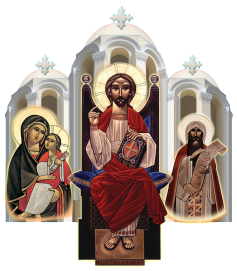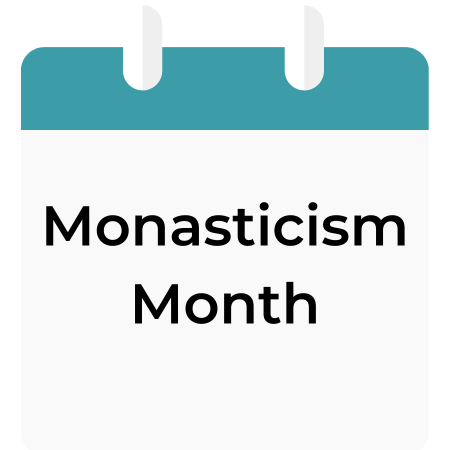St Pachomius was born to pagan parents in Upper Egypt. His first contact with Christianity occurred in 312 when he was a conscript in the Roman army. As a soldier, he experienced great acts of charity from a local community of Christians whose members brought him relief while he was taken prisoner during that time. From that time, he vowed to God to serve mankind.
In his early twenties, he learned of a holy ascetic elder named Apa Palamon and felt a deep desire to become his disciple. Apa Palamon’s monastic rule was characterized by rigorous and demanding ascetic practices, which are listed below.

After several years of discipleship under Apa Palamon, Apa Pachomius received a visit from his elder brother, John. It was during this visit that Apa Pachomius introduced his brother to Apa Palamon’s rule. Later on, his sister Mary, who had remained devoted to God and maintained her virginity since childhood, approached him and was inspired to follow his way of life. In response to her desire, Apa Pachomius constructed a small oratory for her and a community of sisters near his monastery. Over time, the convent thrived and grew, spreading its influence throughout the region. It is then clear that whoever came in contact with St Pachomius, would be inspired to live a life of purity and fellowship with God.
Apa Pachomius became renowned throughout Egypt, yet he always sought to flee from vainglory. In one notable instance, St. Athanasius the Apostolic, serving as Patriarch, visited to consecrate Apa Pachomius to the priesthood. When Apa Pachomius learned of this, he fled and hid. St. Athanasius then granted Apa Pachomius his desire and instructed his disciples to relay a message to him, stating that he who builds his house on the rock, remaining unshaken and fleeing from worldly vainglory, is blessed, as are his disciples.
Both elder and younger monks would visit Apa Pachomius, finding his words full of wisdom and a source of hope in God’s mercy. His rule became prominent throughout Egypt, leading many elders to seek his guidance in establishing his cenobitic practices within their own monasteries.
His cenobitic rule consisted of the following:
“He appointed some from among the capable brothers as his assistants to take care of their souls’ salvation. [He appointed] one [of them] at the head of the first house, that of the lesser stewards, with a second to help him in preparing the tables and in cooking for [the brothers]. [He appointed] another brother also, with his second – men who were faithful on every score – to look after the food and the care of the sick brothers. If anyone wanted to abstain from what was served at table or from what was served to the sick, there was no one to prevent him from doing so. And at the doorway [he appointed] other brothers whose speech was seasoned with salt to receive visitors according to each one’s rank. [These porters] also instructed those who came to become monks, for their salvation, until he clothed them in the monk’s habit. Similarly, [he appointed] other faithful [brothers] noted for their piety to transact sales and make purchases. In each house the brothers in service were replaced every three weeks, and a new class was appointed. They performed in fear and trembling the task assigned to them by the housemaster. He appointed still others with a housemaster and a second to work at the shops and mat-making and to be ready for every obedience. He likewise established three instructions a week: one on Saturday and two on the holy Sunday, while the housemasters gave some, if they wished, on the two fastdays.” (Pachomian Koinonia I, p.49)
Due to the communal nature of his rule, Apa Pachomius became known as the father of the koinonia, which is communal fellowship with God. A common misunderstanding is that the Pachomian koinonia compromised personal ascetic practices by prioritizing communal fellowship. However, the reality is quite the opposite. The Pachomian koinonia established a structured organization that enabled monks to engage in rigorous personal ascetic practices, similar to those under Apa Palamon’s rule.
On the 14th of Bashons, 64 A.M. (348 AD), the Man of God, Apa Pachomius departed. May the blessings of St Pachomius be with us all.
Sources
- Veilleux, A. (1980). Pachomian Koinonia: The life of Saint Pachomius and his disciples.
- Coptic Synaxarium, The Departure of St. Pachomius (Pakhom)

